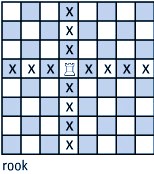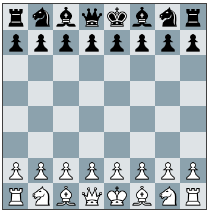
Chess is a game of strategy and tactics where each piece plays a unique role. Among the powerful pieces on the board, the rook stands tall, commanding open files and dominating the ranks. In this beginner’s guide, we’ll unravel the secrets of the rook’s dominance in chess games.
The Rook: The Tower of Strength
Imagine the rook as a sturdy tower guarding the chessboard. While it can’t leap over other pieces, its ability to move any number of squares in a single direction makes it a formidable force, the rook is a powerful piece that can influence the game’s outcome.
The Rook’s Movement
The rook moves horizontally or vertically along ranks and files, capturing enemy pieces and controlling key squares. Unlike other pieces, the rook’s movement is straightforward, making it an essential tool for building strong positions and launching attacks.
The Rook’s Role in Controlling Files
One of the rook’s primary functions is to dominate open files. Picture the chessboard as a grid of squares, with columns called files and rows called ranks. When a file is unoccupied by any pawns, the rook can swoop in and dominate it, exerting control over the entire line.
The Power of Double Rooks
Two rooks working together can create a formidable force known as double rooks. By coordinating their movements, these rooks can control multiple files and ranks simultaneously, putting tremendous pressure on the opponent’s position. The rook pair is a formidable force in both middlegame and endgame scenarios.
Rook Lifts: A Strategic Maneuver
Rook lifts involve moving a rook from its starting position to a more active square along the back rank. This maneuver allows the rook to join the battle quickly, targeting the opponent’s weaknesses and supporting pawn advances.
Creating Mate Threats
The rook plays a crucial role in checkmating the opponent’s king. By combining with other pieces, such as the queen or another rook, it can deliver checkmate along ranks or files. Learning how to coordinate rooks and other pieces is essential for delivering decisive checkmates.
The Rook in Endgames
As the game progresses and the board empties out, the rook’s power becomes more pronounced, especially in endgames. With fewer pieces cluttering the board, the rook can roam freely, hunting down enemy pawns and supporting the king in its quest for victory.
Rook Sacrifice: A Bold Move
In certain situations, sacrificing a rook can lead to strategic advantages or even checkmate. This bold move involves sacrificing the rook for material gain, positional advantage, or to create mating threats against the opponent’s king.
Rook Defensive Capabilities
While the rook excels at attacking, it also plays a vital role in defense. Placing rooks on the back rank can fortify the king’s position, creating a shield against enemy threats. Rooks can also support each other defensively, defending key squares and repelling enemy advances.
Overloading and Pins
The rook’s long-range capabilities make it adept at creating tactical threats such as overloading and pins. Overloading occurs when a rook simultaneously defends multiple pieces or squares, putting pressure on the opponent’s position. Pins immobilize enemy pieces, restricting their movement and creating opportunities for tactical strikes.
Coordination with Other Pieces
To maximize the rook’s effectiveness, coordination with other pieces is essential. Combining the rook’s power with bishops, knights, queens, and pawns can create devastating attacks and impenetrable defenses.
Rook Endgames: Mastering the Art
In endgames where only a few pieces remain, the rook’s role becomes paramount. Mastering rook endgames involves learning key principles such as active rook placement, pawn promotion threats, and creating mating nets around the enemy king.
Practice and Experience
Becoming proficient with the rook requires practice and experience. Regularly playing games, studying master games, and solving chess puzzles can sharpen your rook-handling skills and deepen your understanding of its strategic potential.
In Conclusion
The rook’s dominance on the chessboard is undeniable. Its ability to control open files, coordinate with other pieces, and deliver decisive attacks makes it a cornerstone of chess strategy. By mastering the fundamentals of rook play and integrating it into your overall game plan, you can elevate your chess skills and achieve success on the board. Embrace the power of the rook, and let it guide you to victory in the realm of chess.


One thought on “The Rook’s Dominance: A Beginner’s Guide to Chess Strategy”
Comments are closed.